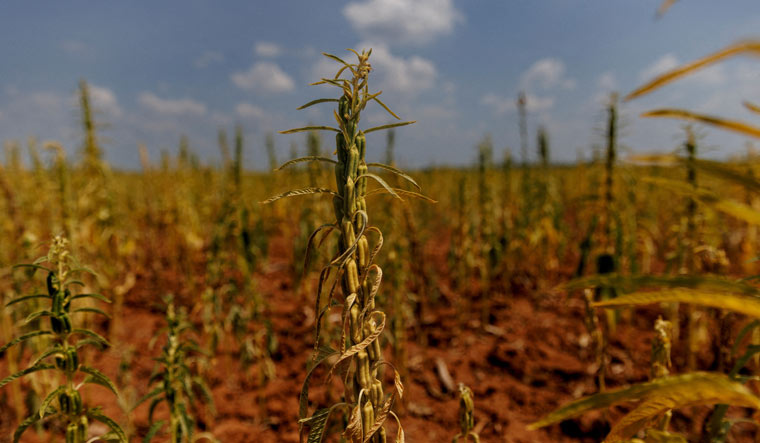The Earth has endured scorching heat for 46 years now. Environmental shocks due to global warming continue to impact nature and humanity in unprecedented ways establishing climate change as a ‘defining issue’ of our time.
To set the context, the oceans were the hottest ever last year, and carbon dioxide (CO2) in the atmosphere is more than 50 per cent above pre-industrial levels (average of 417.2 parts per million). Additionally, the Amazon rain forest is gradually turning into a carbon source than a carbon sink due to deforestation and there is less sea ice surrounding Antarctica than at any time since the late 1970s.
Climate change is not just a crisis, but a ‘crisis multiplier’. According to data presented at COP 27, if climate change is ignored, it is expected to cause a huge humanitarian crisis - 3.4 million deaths per year by the end of the century, with India alone set to record one million additional heat-related deaths in the next 67 years.
So, the question is: do we have solutions to arrest the intensity of the growing climate crisis?
Critical juncture for integrated climate action
At the Earth Summit in 1992, leaders across the globe came together for the first time to discuss the result of rapid economic progress: exploitation of earth’s resources. Through thirty years of efforts, nations recognised that climate change is interdependent on multiple factors - ecosystems, biodiversity, and societal development, to name a few.
Today, our response to climate crisis has evolved to become more holistic and strategic. It includes two overarching approaches at work simultaneously – reducing and stabilizing the levels of heat-trapping greenhouse gases in the atmosphere called ‘Mitigation’ and adapting to the climate change impact already in the pipeline called ‘Adaptation’.
Biodiversity: Strongest warrior against climate change
When human activities produce greenhouse gases (GHGs), around half of them is absorbed by the land and the ocean. These ecosystems and the biodiversity they contain are natural carbon sinks which can help reduce the amount of GHGs in the air, providing nature-based solutions.
Unfortunately, food production and unsustainable agricultural practices are the biggest reason for biodiversity loss today. Recognising this, 196 countries even signed a historic deal to adopt the Kunming-Montreal Global Biodiversity Framework. This includes the 30 by 30 goal – restore 30 per cent degraded ecosystems globally (on land and sea), and conserve and manage 30 per cent areas (terrestrial, inland water, and coastal and marine) by 2030.
While biodiversity restoration is picking up pace as a top mitigation strategy, accurate knowledge and practice of efficient nature-based solutions need to become mainstream at the national level. For instance, in efforts for better carbon sequestration in lands, afforestation has been the go-to solution. However, institutions and organizations need to work with ecologists and restoration specialists, to get an insight on what kind of trees and planting methodology would work for a particular area. Additionally, large scale awareness and implementation of these initiatives can be done efficiently through collaboration with not-for-profit organisations like Rotary International.
Another under-explored solution to sequester carbon is to focus on soil biodiversity. Here, through public-private partnerships, Indian farmers can be trained in climate-resilient agriculture, working on increasing soil organic carbon content through regenerative agriculture techniques, thus conserving soil.
Mitigation strategies are increasing becoming a favourable solution for many nations. In the last decade, there have been sustained deduction in the unit costs of solar energy (85%), wind energy (55%), and lithium-ion batteries (85%). This has in turn led to large increases in their deployment. For example, when compared to 2010, solar energy is deployed 10 times more today, and electric vehicles (EVs), more than 100 times, varying across regions. In fact, 2022 was the first year where investments to deploy clean energy technologies surpassed the $1 trillion mark and put them on par with fossil fuel investments globally.
Climate finance at the heart of adaptation strategies
Much like mitigation, adaptation strategies are equally gaining momentum across all sectors and regions in the world. At COP 27, leaders focused on adaptation strategies where a breakthrough agreement to provide ‘loss and damage’ funding for climate-vulnerable countries besieged by climate disasters was agreed upon. In India, too, almost a decade ago, the National Adaptation Fund for Climate Change (NAFCC) was established to support adaptation activities in the states that are vulnerable to the effects of climate change—around 30 projects have been sanctioned in 27 states and Union Territories till date.
While there is government support for adaptation strategies, there are some barriers to becoming resilient against the crisis. Some of them include limited financial resources to develop innovative solutions for worsening temperatures and pollution rise, biodiversity loss, lack of citizen engagement, mobilization of finance, low climate literacy and a low sense of urgency to climate crises, to name a few. This is where private sector and development sector organizations can work together and direct philanthropic efforts towards pointed focus areas of climate action.
Today, international leaders are adopting integrated climate solutions that address the intertwined nature of climate, biodiversity, and pollution. In India, there is ongoing efforts to set up thousands of eco clubs, solar powered irrigation and laser-guided land levelling to conserve water and increase yields. However, more needs to be done. So, to answer the question, yes, humanity can indeed win this battle against climate crisis if all nations come together immediately and implement smarter climate-first solutions that are rooted in science and nature.
The author is an an ecologist and International Director of the Projects Division of the Environmental Sustainability Rotary Action Group (ESRAG)



